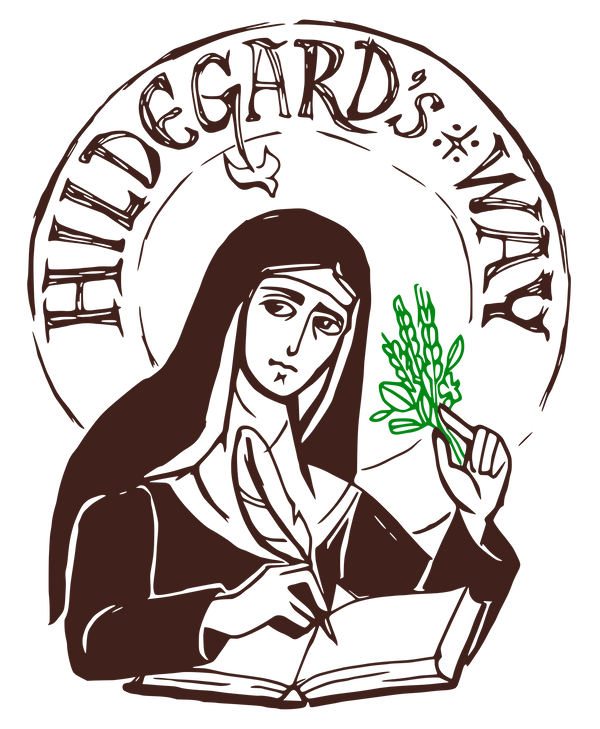Hildegard's Bio

Benedictine, nun, visionary, prophetess, tireless reformer of the Church, and renewer of monastic life; author in theology, medicine, cosmology, natural sciences, and herbalism; poet, composer, preacher, and exorcist—this is Saint Hildegard of Bingen.
Born in 1098 in Bermersheim, County Palatine of the Rhine, Hildegard was the tenth child of her parents, offered to the Church as a tithe. She was known for her extraordinary talents, sensitivity, intelligence, and prophetic gifts. From the age of five, she experienced visions, which she initially kept to herself, later sharing them only with Jutta and her confessor, Volmar.
At eight, Hildegard entered the convent, where Jutta taught her and the other sisters the foundations of monastic life according to the Rule of Saint Benedict. Although she often called herself "indocta" (unlearned), she had a private teacher, Volmar, who guided her spiritually and intellectually. Hildegard was well-versed in Latin, ancient literature, and the Scriptures, and her writings reveal a deep knowledge of Church Fathers and medieval authors.
After spending twenty-three years at the Mountain of Saint Disibod, Hildegard became superior of the female congregation following Jutta's death in 1136. In 1141, she received a vision where God commanded her to write down what she had seen, a task that initially terrified her. However, with encouragement from Volmar, she began writing Scivias (Know the Ways of the Lord), completing it over ten years with help from Volmar and Sister Richardis von Stade.
Hildegard’s work drew attention, and portions were read to Pope Eugene III, who encouraged her to continue. Following Scivias, she wrote more theological works, forming a visionary trilogy that includes Liber vitae meritorum (The Book of Life's Merits) and Liber divinorum operum (The Book of Divine Works).
Her growing fame attracted many women to Disibodenberg, prompting plans for expansion. In 1150, Hildegard claimed that God instructed her to relocate to Rupertsberg, facing fierce opposition from the monks and families of the nuns. Drawing parallels to Moses, she became the first woman in the Middle Ages to establish a female monastery independently. The community thrived, leading her to found a second monastery in Eibingen.
Despite her many responsibilities, Hildegard produced over 70 songs, authored the drama Ordo Virtutum, and wrote scientific works like Physica and Causae et Curae. She also created her lingua ignota (unknown language) and litterae ignotae (unknown letters). Hildegard corresponded with prominent figures of her time, including kings and bishops, who sought her spiritual guidance.
Hildegard undertook four preaching journeys, speaking publicly in a time when such activities were typically reserved for men. She called for renewal in the Church, warning against heresies. In 1163, she met Emperor Frederick Barbarossa, who placed her monastery under his protection.
After Volmar's death in 1173, Hildegard faced challenges in finding a successor. Throughout her life, she embodied kindness and determination, earning respect and trust. She defended the weak and spoke out against injustice.
Hildegard died on September 17, 1179. At that time, a miraculous sign—a glowing cross—appeared in the sky, witnessed by many in Bingen. Her canonization process began in 1227, and she was eventually recognized as a saint. In 2012, Pope Benedict XVI canonized her for the entire Church and proclaimed her a Doctor of the Church, making her the fourth female Doctor in history, alongside Saints Catherine of Siena, Therese of Lisieux, and Teresa of Ávila.
